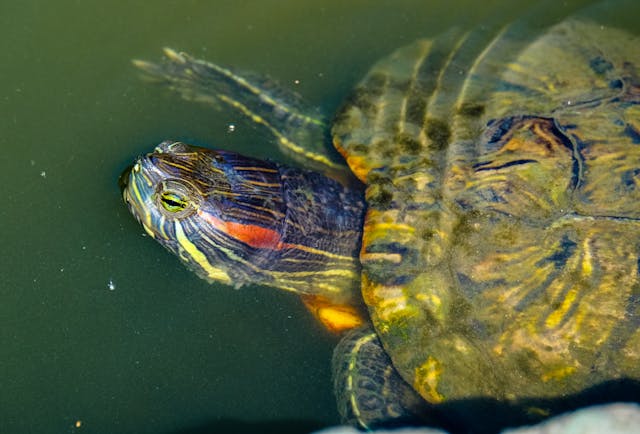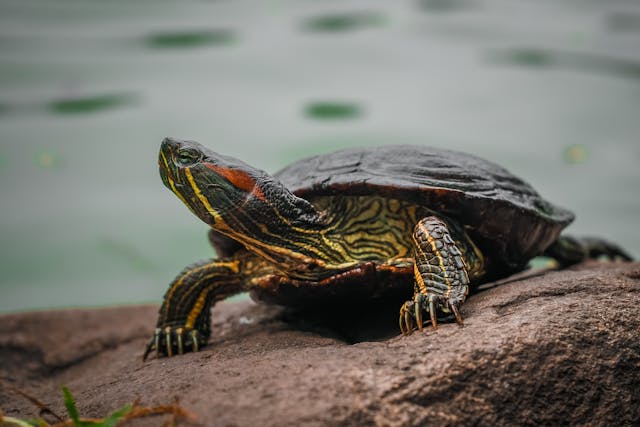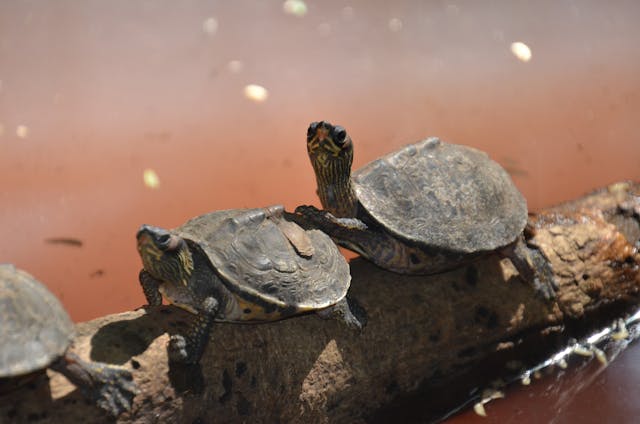Turtles have long fascinated pet enthusiasts with their gentle demeanor, captivating appearance, and fascinating behavior.
As unique creatures that have roamed the earth for millions of years, pet turtles offer a rewarding and enriching experience for individuals of all ages.
Lets dive into the world of pet turtles, exploring different species, care requirements, and tips for providing a fulfilling life for your shelled companion.

Choosing the Right Turtle Species:
Before bringing home a pet turtle, it’s crucial to research and select a species that aligns with your lifestyle, space availability, and level of commitment.
Common pet turtle species include Red-eared Sliders, Painted Turtles, Box Turtles, and Eastern Musk Turtles, each with its own unique characteristics and care requirements.
Consider factors such as size, temperament, and habitat preferences when choosing the right turtle for you.
Creating the Ideal Habitat:
Providing a suitable habitat is essential for the health and well-being of your pet turtle.
Depending on the species, turtles may require an aquatic setup, semi-aquatic enclosure, or terrestrial environment.
Ensure that the enclosure is spacious enough to accommodate the turtle’s size and includes adequate basking areas, UVB lighting, hiding spots, and a clean water source with appropriate filtration.

Maintaining Water Quality:
For aquatic and semi-aquatic turtles, maintaining clean water is crucial for their health and vitality.
Invest in a high-quality filtration system designed specifically for turtle tanks to remove debris, waste, and harmful chemicals.
Regular water changes and monitoring of water parameters such as pH, ammonia, and nitrite levels are essential for preventing health issues and ensuring a thriving aquatic environment.
Providing Proper Nutrition:
A well-balanced diet is essential for the overall health and longevity of your pet turtle.
Most pet turtles are omnivores and require a varied diet consisting of commercial turtle pellets, live or frozen prey such as insects or small fish, and a selection of leafy greens and vegetables.
Offer a diverse range of foods to ensure nutritional adequacy and supplement with calcium and vitamin D3 to support healthy shell and bone development.

Maintaining Temperature and Humidity:
Turtles are ectothermic creatures, meaning they rely on external sources of heat to regulate their body temperature.
Maintain a basking area with a temperature gradient ranging from 85-90°F (29-32°C) to allow your turtle to thermoregulate effectively.
Additionally, monitor humidity levels in the enclosure, particularly for species that require higher humidity, and provide a humid hide or misting to prevent dehydration and shell issues.
Handling and Enrichment:
While turtles may not be as interactive as some other pets, they still benefit from gentle handling and environmental enrichment.
Spend time observing and interacting with your turtle, offering occasional handling sessions to help them become accustomed to human contact.
Provide enrichment activities such as exploring new objects, foraging for food, and supervised outdoor time in a secure enclosure to stimulate their natural behaviors and promote mental stimulation.

Conclusion:
Pet turtles offer a unique and fulfilling companionship experience for reptile enthusiasts of all ages.
By understanding their specific care requirements and providing a suitable habitat, proper nutrition, and enrichment, you can ensure a happy and healthy life for your shelled companion.
Whether you’re a seasoned turtle keeper or a novice enthusiast, the bond you share with your pet turtle will undoubtedly enrich your life and provide countless moments of joy and fascination.
Check out this turtle blog!: https://turtletalk.blog/
Go back to our home page!
